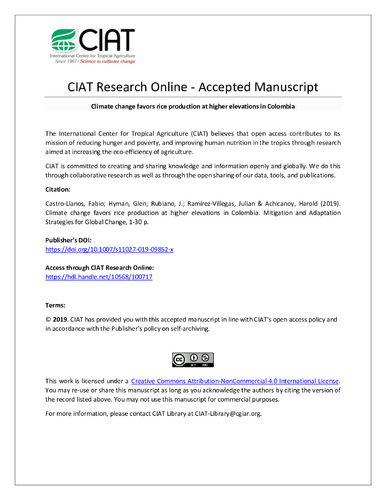Climate change favors rice production at higher elevations in Colombia
Rice (Oriza sativa) feeds nearly half of the world’s population. Regional and national studies in Asia suggest that rice production will suffer under climate change, but researchers conducted few studies for other parts of the world. This research identifies suitable areas for cultivating irrigated rice in Colombia under current climates and for the 2050s, according to the Representative Concentration Pathway (RCP) 8.5 scenario. The methodology uses known locations of the crop, environmental variables, and maximum entropy and probabilistic methods to develop niche-based models for estimating the potential geographic distribution of irrigated rice. Results indicate that future climate change in Colombia could reduce the area that is suitable for rice production by 60%, from 4.4 to 1.8 million hectares. Low-lying rice production regions could be the most susceptible to changing environmental conditions, while mid-altitude valleys could see improvements in rice-growing conditions. In contrast to a country like China where rice production can move to higher latitudes, rice adaptation in tropical Colombia will favor higher elevations. These results suggest adaptation strategies for the Colombian rice sector. Farmers can adopt climate-resilient varieties or change water and agronomic management practices, or both. Other farmers may consider abandoning rice production for some other crop or activity.

